Unlike above-ground crops, it’s not always so easy to tell when potatoes are ready to harvest. How can you navigate your potato harvest when you can’t even see them? We’re here to help! In this post, I’m gonna share 6 signs that they’re ready to dig up and 2 times when not to harvest potatoes.
1. 7-8 Weeks After Planting Potatoes
The first time you can harvest potatoes is when they’re in the baby or new potato stage, about 1-2 inches (2.5-5 cm) in diameter. All potato varieties will reach this stage about 7-8 weeks after being planted. I plant one of my potato crops in the fall, so this, along with peas and greens, is usually one of the first crops I get in spring.
Baby potatoes have thin, immature skins, you’ll be able to rub them off. That makes them super tender, and great for roasting, but pretty bad for storage. So, make sure to refrigerate them and use them quickly, within 10 days.
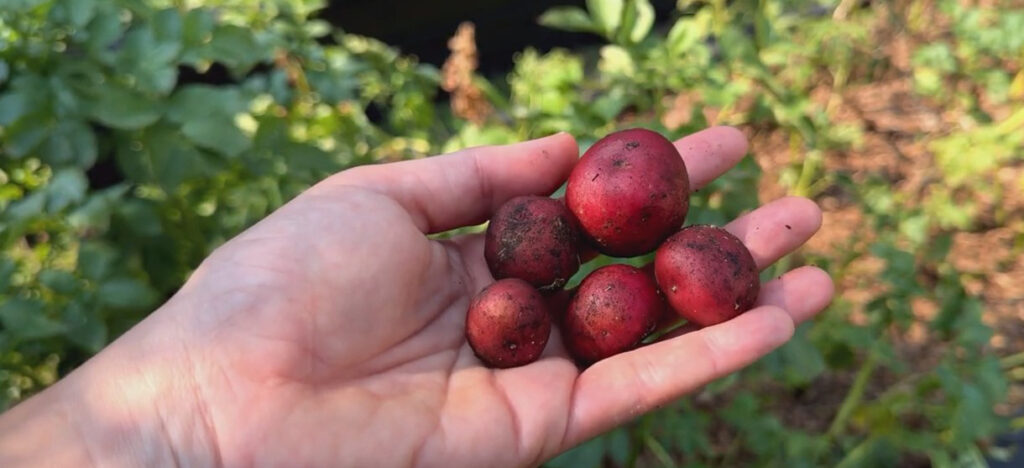
The plants at this stage are still green, lush, and young. Anything you harvest at this point is taking away from harvesting that same potato much larger at a later point, so don’t go too overboard on the harvest here! However, there is a special way to harvest new potatoes to keep the main plant alive. If you want to learn more about that, look for the next installment in our potato series, coming soon!
2. Flowering Potato Plants
White or lavender potato flowers are another sign your potatoes are ready to harvest. After the flowers fall off is when you can harvest new potatoes. This sign might not work for everyone, though, because not all potato varieties flower, so check if yours does.
Also, not all climates allow flowering. I live in the northeast United States, zone 7a. I’ve been growing the same two varieties every year, Katahdin and Red Norland, and sometimes they flower and sometimes they don’t.
So, this is a good sign, but if the 7-8 week timeframe comes and goes with no flowers, and you’re looking for new potatoes, I’d say dig in. Get it, dig in? 🤣
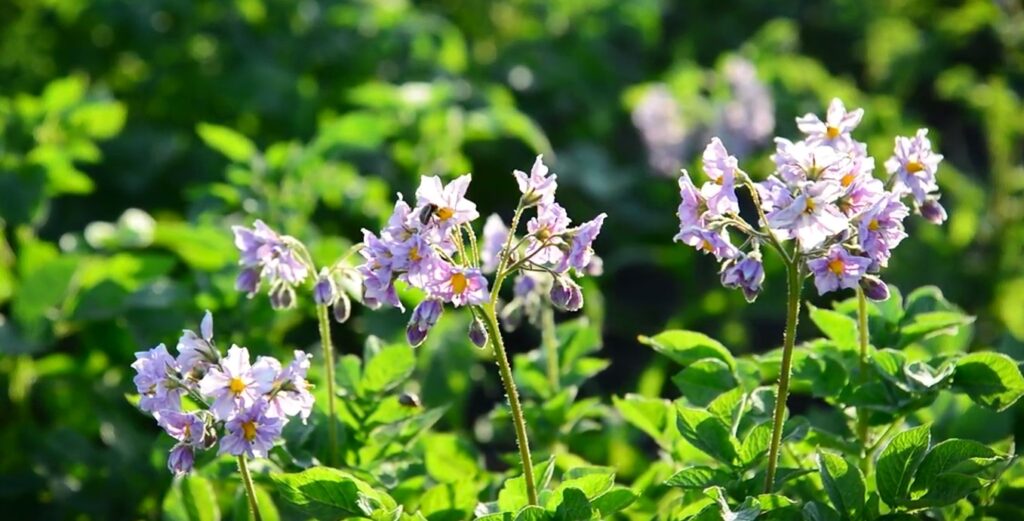
3. Potato Days to Maturity
The third sign you can harvest your potatoes is if you’ve reached the “date to maturity” for your potato variety. Generally, for spring-planted potatoes that’s 55-120 days from being planted.
My fall-planted potatoes get a quicker start in the spring, but still take about the same total days.
Keep in mind that dates to maturity are for best case growing conditions, which almost never happens! I always add on 5-10 days depending on how well the season went.
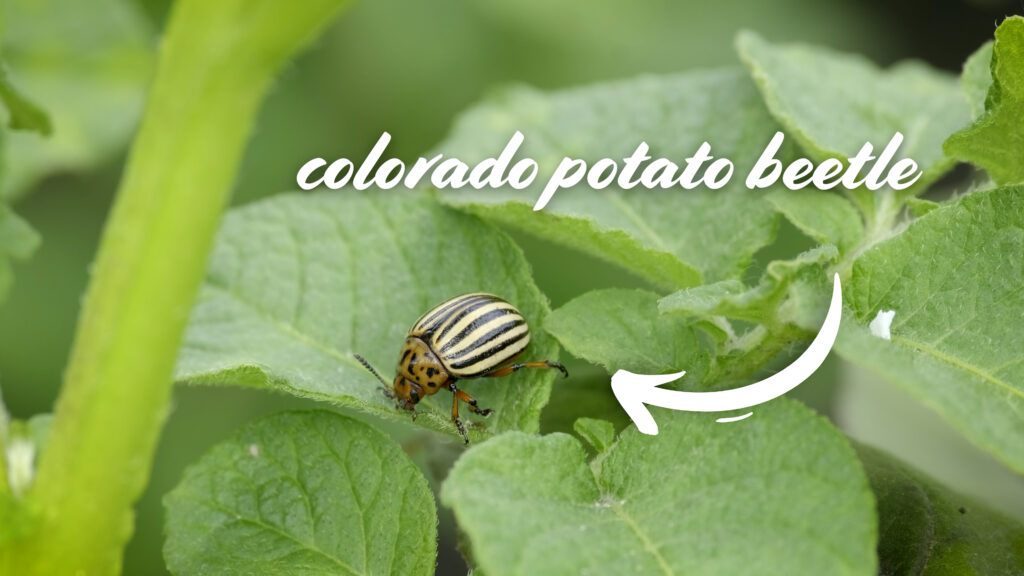
Even without this extra time, that’s a pretty huge range—more than two months! That’s why it’s important to know your variety or at least the type of potatoes you have:
- Early season potatoes (earlies), are ready 55-70 days from planting. Varieties include Yukon Gold, Purple Viking, Rocket, and Blue Danube.
- Mid-season potatoes (second earlies), can be harvested 70-90 days after planting. Mid-season varieties include Kennebec, Red Pontiac, and Nicola.
- Late-Season potatoes (maincrop), are ready 90-120 days after planting. Popular maincrop types include Burbank Russet, Katahdin, and Desiree.
There are a lot of potato varieties! And the different colors—blue, purple, yellow, and white—fall into all these types. If you’re not sure where yours lands, check with your seed supplier, or see our handy chart below:
| Potato Variety | Type | Days to Maturity |
|---|---|---|
| Yukon Gold | Early | 55-70 |
| Rocket | Early | 55-70 |
| Blue Danube | Early | 55-70 |
| Purple Viking | Early | 55-70 |
| Rio Grande Russet | Early | 59-65 |
| Masquerade | Early | 63 |
| Mountain Rose | Early | 70 |
| Superior | Early | 55-70 |
| Red Luna | Early | 68 |
| Carola | Early | 65-80 |
| Red Maria | Early | 55-70 |
| Kennebec | Mid-season | 70-90 |
| Red Pontiac | Mid-season | 80 |
| Nicola | Mid-season | 70-90 |
| AmaRosa | Mid-Season | 70-90 |
| Red Chieftain | Mid-Season | 70-90 |
| Yukon Gem | Mid-Season | 70-90 |
| Adirondack Red | Mid-Season | 70-90 |
| Harvest Moon | Mid-Season | 70 |
| Gold Rush | Mid-Season | 70-90 |
| Adirondack Blue | Mid-Season | 70-90 |
| Satina | Mid-Season | 70-90 |
| Peter Wilcox | Mid-Season | 70-90 |
| Huckleberry Gold | Mid-Season | 70-90 |
| Purple Majesty | Mid-Season | 85 |
| Russet Norkotah | Mid-Season | 85 |
| Red Gold | Mid-Season | 90 |
| All Blue | Mid-Season | 90 |
| Red La Soda | Mid-Season | 80-100 |
| Burbank Russet | Late-Season | 90-120 |
| Princess Laratte | Late-Season | 90-110 |
| Magic Molly | Late-Season | 90-120 |
| Katahdin | Late-Season | 90-120 |
| Desiree | Late-Season | 90-120 |
| Russian Banana | Late-Season | 90-120 |
| German Butterball | Late-Season | 90-120 |
| Elba | Late-Season | 90-120 |
| French Fingerling | Late-Season | 90-120 |
| Rocky Mountain Russet | Late-Season | 90-120 |
| Rose Finn | Late-Season | 90-120 |
| Canela Russet | Late-Season | 100-130 |
| Makah Ozette | Late-Season | 100-130 |
If you have a favorite potato variety, let us all know in the comments what your climate is, and why it’s your favorite.
4. Potato Plant Die Back
Here’s a cocktail party word you only pull out at the nerdiest of gatherings—senescence. That’s when the potato plant dies back. If your potatoes are starting to look pathetic —yellow, brown, holes in the leaves, crispy edges, flopping over—there’s actually nothing wrong! They’ve lived their best lives and the potato tubers, the roots we eat, are done growing since the stems and leaves are no longer feeding them.
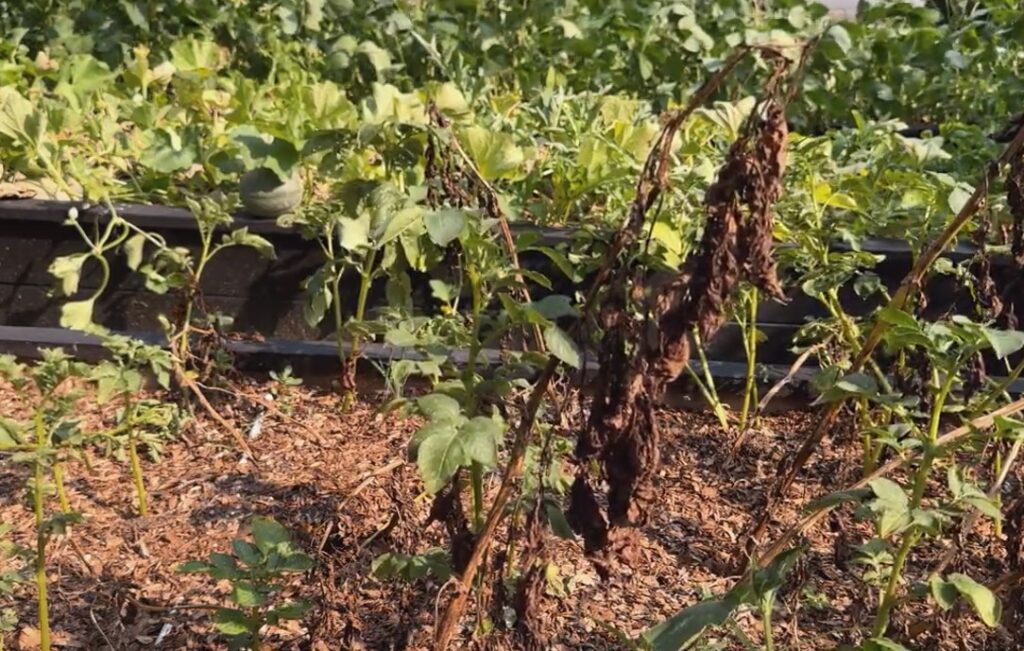
To harvest, wait until the vines are completely brown and dead. You may even want to wait a few days, up to a week, beyond this to allow the skins to toughen up. For maximum storability, this is the time to harvest both storage and seed potatoes.
And if you’re harvesting your full crop, I highly recommend using a harvest apron. My favorite is the Joey Apron from Roo. Not only is it my go-to weeding buddy, but it holds an astounding amount of heavy potatoes. It’s machine washable, thank goodness, because potatoes are not clean! Use the code RESPROUT for 10% off on their website.
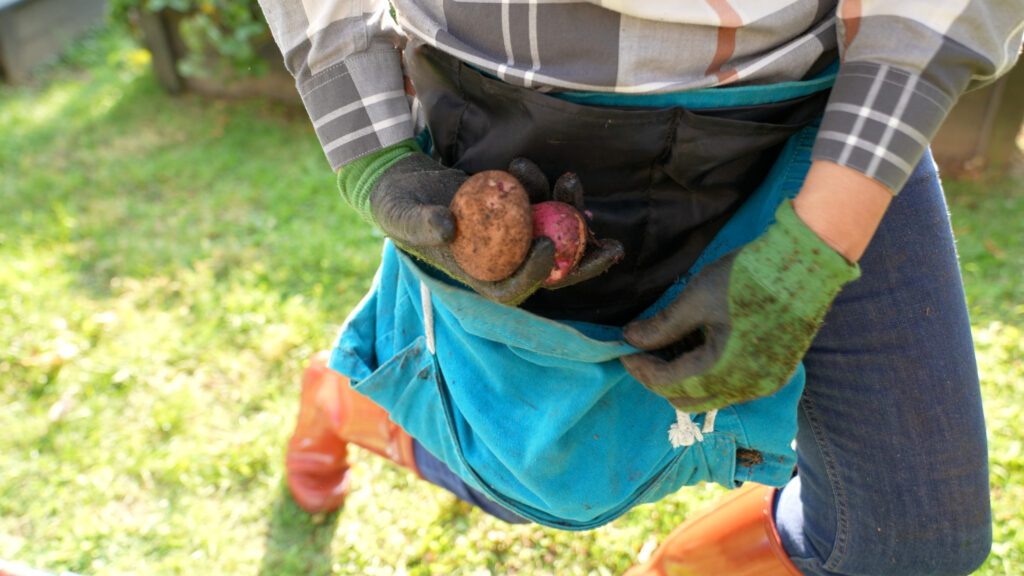
5. First Frost
If your first frost is around the corner or just hit, it may be the time to start harvesting. Potato plants can take a light frost but if the tubers get frozen they will turn to mush. If your potato plants haven’t died back yet, they will from the frost anyways, so no sense holding out.
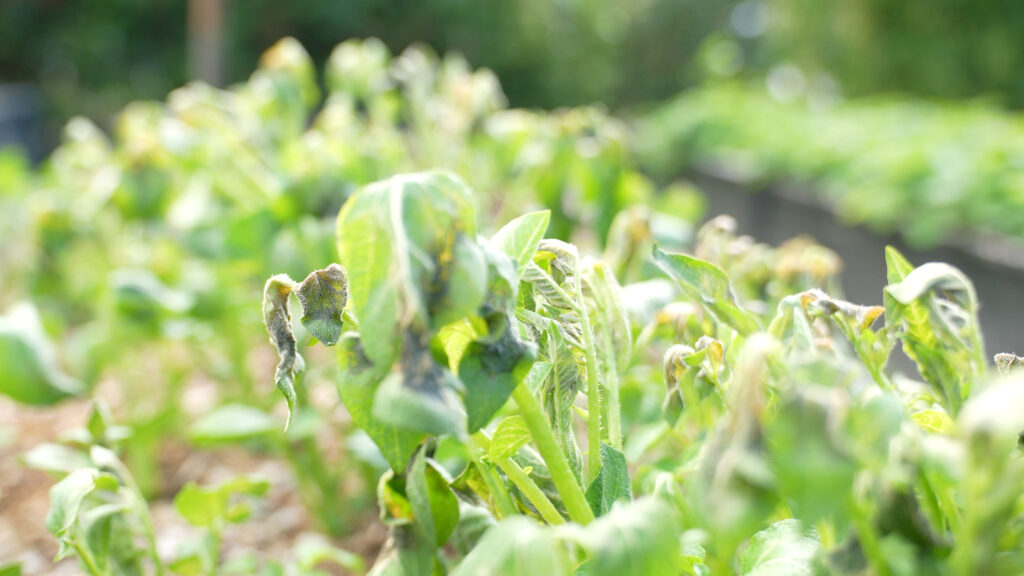
That being said, if you live in a moderate climate you may be able to push this much further than the first frost. Where I live, the temperatures rarely reach below 25ºF (about -4º C) in the winter. I’ve left potatoes in my raised beds, protected by several inches of soil and mulch and they’ve been just fine for months after the first frost.
In fact, even after a winter harvest, I will often find forgotten potatoes in my beds come spring, rock hard, in perfect condition. The potato seeds I plant in the fall, when I plant them deep enough, aren’t bothered by my winter temps.
So, I’d say, know the first frost rule, and depending on your climate—and your level of laziness—know when you can break this one.
6. Anytime
Another great sign to harvest potatoes? Seriously, when you’re hungry! As you can tell now, you can basically harvest potatoes anytime between the new potato phase and when they die back. That’s a 70 day harvest window for late season potatoes!
If you have multiple varieties and season types of potatoes planted, or you’re doing succession planting, this huge 70-day harvest range is even bigger. And if you’re being lazy like me, leaving potatoes in the ground until mid-winter, and you’re fall planting and getting a crazy early new potato crop, your potato harvest window is the majority of the year. You can easily go into your garden and just harvest a few potatoes for dinner and use your garden like a spare refrigerator.
And who doesn’t want a spare fridge filled with potatoes?
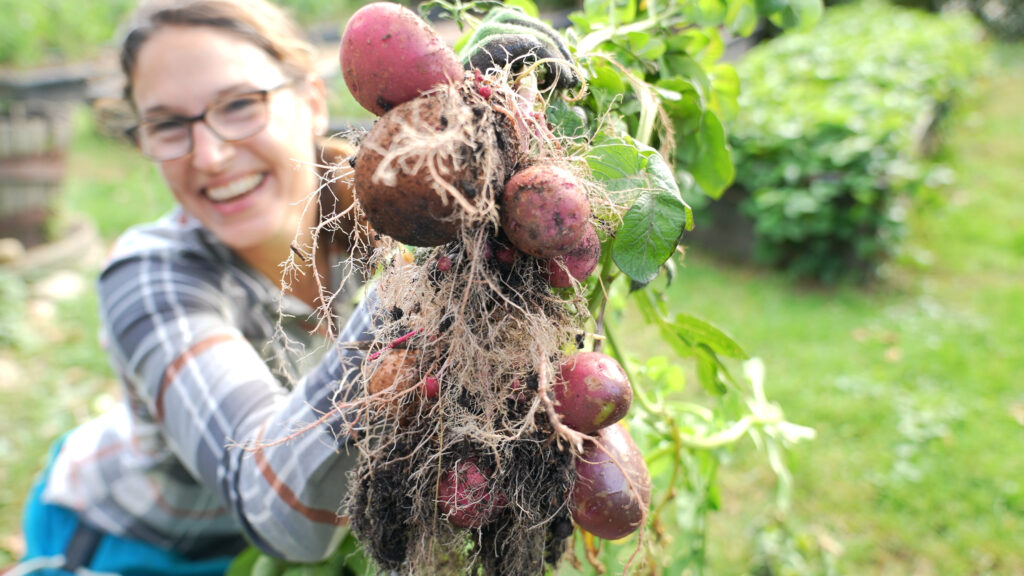
For the most part, don’t overthink the harvest time. Gently dig a tuber up, and try not to damage the plant or the root. If it’s not ready, and it’s still attached, put it back in the ground. If it’s not attached eat it. That’s it. End of story.
When Not to Harvest
There are two important times you do not want to harvest potatoes. Firstly, if the potato has turned green, don’t harvest it — send it straight to the compost.
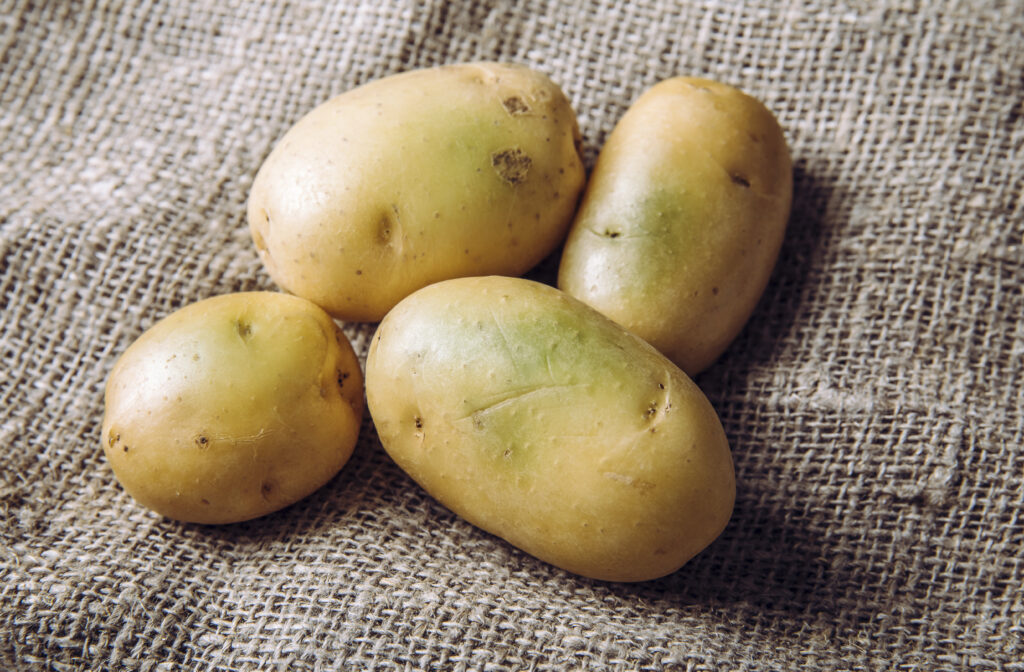
The green means the potato has been exposed to the sun and solanine has formed in the green areas. Sometimes this can happen when potatoes push their way up out of the soil or if the soil hills are disturbed.
Unless consumed in very large quantities, solanine will not kill you, but it will give you headaches, abdominal pains, and diarrhea. Not fun.
You can cut out small areas of green, no problem. Sometimes larger potatoes will be green just on the outside and you can cut or peel that off, but usually it’s not worth the extra work. Potatoes that have solanine in them taste bitter anyways, so you’re not saving much.
Another time when not to harvest potatoes is before their first 7 weeks after planting…they’re just too young! You might find a couple marble sized potatoes, but because the plant is so immature, you’d likely kill it. Better to wait for new potatoes at least, which you can get at 7-8 weeks. If gardening has taught me anything, it’s patience!
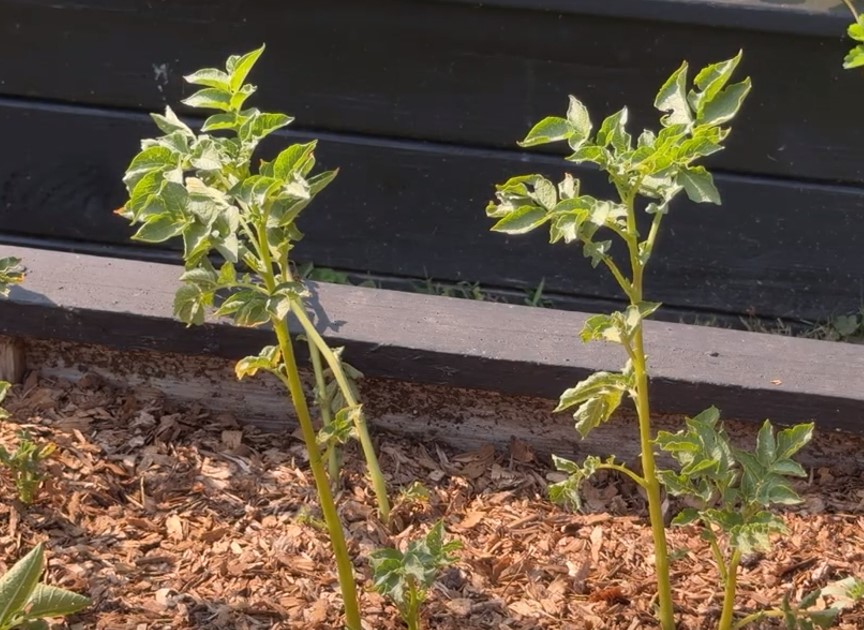
There you have it, the best tips on when to time your potato harvest! Though they are pretty versatile and offer you lots of opportunity for a lengthy harvest, there are just a couple times to skip your potato harvest.
What is your favorite time to harvest potatoes? Let us know in the comments!
Sources
- Yard and Garden: Harvesting and Storing Potatoes, Iowa State University Extension.
- Homegrown Potatoes Tell You When to Harvest Them, Michigan State University Extension.
- Growing Potatoes in Home Gardens, University of Minnesota Extension.
- Growing Potatoes Successfully, The Maine Potato Lady.
- What Fruit is Growing on My Potato Plants?, Michigan State University Extension.
- Potatoes From Garden to Table, North Dakota State University Extension.


Leave a Reply